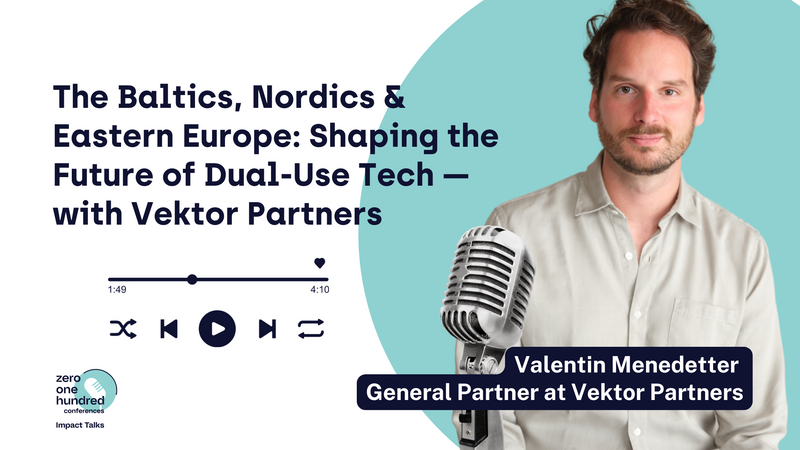
Valentin Menedetter General Partner at Vektor Partners is a seasoned VC and operator with experience at Speedinvest and Palantir. At Speedinvest, he worked with over 100 investments across sectors, partnering closely with funders and leading fund formations. And at Palantir, he focused on commercial strategy, specializing in scaling SaaS businesses with a focus on D2B pricing and growth. And now he is General Partner at Vector Partners, a dual-use defense tech, and can we say impact investing as well, or just dual defense tech fund? Just dual defense, yeah. Yeah, dual defense tech, wonderful. So Valentin, thank you very much for your time today.
Valentin, thank you very much for your time today. To start, could you share what inspired you to launch a dual-use defense tech fund in 2020, when the world was focused on the pandemic—not geopolitical tensions?
Yeah, happy to. And first of all, thank you so much for having me—it's a pleasure.
In 2020, when we started investing out of Fund I, we didn’t set out with “dual-use” in mind as a central theme. It was inherently part of our strategy, though, because we always focused on technologies that had strong commercial applications but were also suited for military or defense purposes. That’s just the nature of the problems these technologies solve—they often span both worlds.
So in a kind of serendipitous way, the world changed, but our strategy didn’t. The difference is that now, the defense and military relevance of these technologies is no longer in the background—it’s front and center.
You focus heavily on Series A stage companies. Why is this stage particularly important in the defense tech value chain?
What we saw is that Series A—and sometimes late seed, since the lines can be blurry—is where product-market fit starts to show. There’s usually a product, early customers, decreasing R&D risk, and the need to build a real business around the technology.
That’s where we come in. We help founders transition from building a capability to building a company—commercializing, industrializing, and scaling their tech. These startups often target large, complex customers—corporates or governments—so navigating procurement and go-to-market is no small feat.
And it’s not just about signing customers; it’s also about building internal functions, infrastructure, and teams that allow the company to scale. That’s the value we add—not just as investors, but as former operators who work hands-on with founders.
Can you tell us more about Vektor Partners—your geographic focus and your team’s composition?
Yes, absolutely. From day one, we recognized that the combination of our backgrounds—operational, technical, and financial—was a differentiator. We’ve since expanded our team to deepen that bench.
For instance, we have Jam Davies, who founded the neural networks division at Arm; Chris Markson, who led Palantir’s defense portfolio in Europe and advised NATO; Roger Spitz, former Global Head of Aerospace & Defense M&A at BNP Paribas; and then, you know, adding people with industry and boardroom experience like Bernd Gottschalk, who used to be the CEO of Daimler Trucks. As a team, we emphasized capturing a broad range of experience needed to help companies navigate complex situations, especially at this pivotal stage when they are trying to move from zero to one.
You didn’t say much about the regions you focus on. You mentioned the Nordics, Baltics, and Eastern Europe—why are these so relevant for this type of industry?
Yes, we do focus on Europe broadly, but as you said, there’s a specific emphasis on the Baltics, Nordics, and what people now refer to as the Eastern flank. That’s driven by several factors. First, there’s the obvious geographic proximity and the urgency these countries feel, which has existed long before the current conflict. These ecosystems have long been aware of the regional threat landscape.
This is paired with access to excellent tech talent. You find founders who have been building in this space historically, or who are now leveraging relevant experience to launch startups. Gaming, for example, is a huge industry here, and many engineers from gaming have transitioned into defense tech roles. Finland is a great example of this. Additionally, there is a noticeable entrepreneurial discipline—a pragmatic approach to building businesses in these regions.
Those are the main pillars that make these geographies so interesting for us. We’re also well-connected to early-stage funds in these areas, which is crucial for our Series A strategy. Plus, because of our reputation in deep tech and dual-use investing, we receive a lot of inbound interest from founders referencing the kinds of technologies we’ve backed.
You mentioned interest from U.S. LPs in European dual-use VC funds. What do we have in Europe that they don’t?
There’s a unique technological opportunity in Europe. It’s driven by cultural and historical contexts, academic centers of excellence, and unique capabilities. The U.S. is now actively looking to Europe to integrate these capabilities into their own stacks. It’s complementary—a two-way street. Particularly in defense, most agree that progress requires collaboration.
Do you also see European LPs backing U.S.-based defense VC funds?
Yes, some European LPs have been investing in U.S. venture for decades. But our perspective as a fund is that the U.S. ecosystem is very robust. You have major players like Shield Capital (L3 Harris), Lockheed Martin, and Founders Fund. So we ask: where can we have the most impact? Many of us have gained valuable experience in the U.S. but chose to return to Europe because of the clear need to build up the local ecosystem.
I don’t see many European funds with a 100% U.S. strategy. Most are focused on making an impact where it’s needed—here in Europe.
And because we’re talking about Series A: in the U.S. ticket sizes are higher, right? So it’s easier for U.S. LPs to come here than for Europeans to go there?
Exactly. In the U.S., rounds close quickly and are often much larger. Series A rounds there can be the size of a Series B or even Series C in Europe. For a European fund, participating meaningfully in a U.S. round would distort your deployment strategy. That’s why many U.S. LPs see more value investing in Europe at this stage.
You're fundraising for your second fund, correct? What's your target and where do you stand now?
Yes, we’re raising our second fund with a target of €100 million. It’s focused on Series A and late seed, with about 50% reserved for follow-on to counter dilution in later rounds. Initial ticket sizes range from €1 to €5 million, likely leaning toward the higher end. The first fund is fully invested.
We opened the data room a few weeks ago, and several investors have soft committed. We’re finalizing those commitments now and preparing for a first close, with more closings to follow.
How has the LP response evolved over the past year?
It has changed significantly, even week by week. Some investors have been tracking this space since mid-2022, right after the war in Ukraine began. Now we see interest across all investor classes, along with a heightened sense of urgency.
Everyone recognizes that dual-use tech is vital for Europe’s strategic resilience—not just in defense but across energy, supply chains, food, and economic stability. These aren’t just warfighting tools; they are enablers of systemic security. That broader understanding is helping LPs relate more easily to these technologies.
This ties into ESG and impact. Historically, impact investing excluded defense. Has that changed?
Yes, there's a shift happening. We're now talking about energy resilience, food security, and infrastructure—all traditionally impact-aligned areas. And increasingly, people understand that dual-use technologies can contribute positively to these goals.
So how do you define your focus and strategy at Vektor Partners?
At our core, we focus on the transformative potential of software in defense. Everything is moving toward cloud-deployed and edge-computing solutions. Computer vision is a key area—it allows software to perceive its environment and drive physical systems.
This leads to edge computing, more efficient chips, software-defined hardware, and data fusion. It’s about building capabilities where latency matters and compute needs to happen on-device. That’s true for things like GPS-denied drone navigation, which needs real-time situational awareness without relying on external signals.
The big theme is that innovation is coming from software, and that’s where our thesis is strongest.
It sounds incredibly complex. Isn’t it hard to be a VC in this space today?
Yes, it is. The bar is very high. These are highly technical investments, and translating their relevance to LPs takes effort. But we’re lucky to work with people on our team who’ve spent decades in these industries.
Often, the use cases are surprisingly relatable. People assume some of these solutions already exist—but they don’t. That makes our job partly about education.
So it's really about trust and expertise?
Exactly. Founders today are pragmatic. They know what kind of investor they need. Many tell us that our experience makes us uniquely suited to support them. And that’s a huge responsibility—but also a real privilege.

